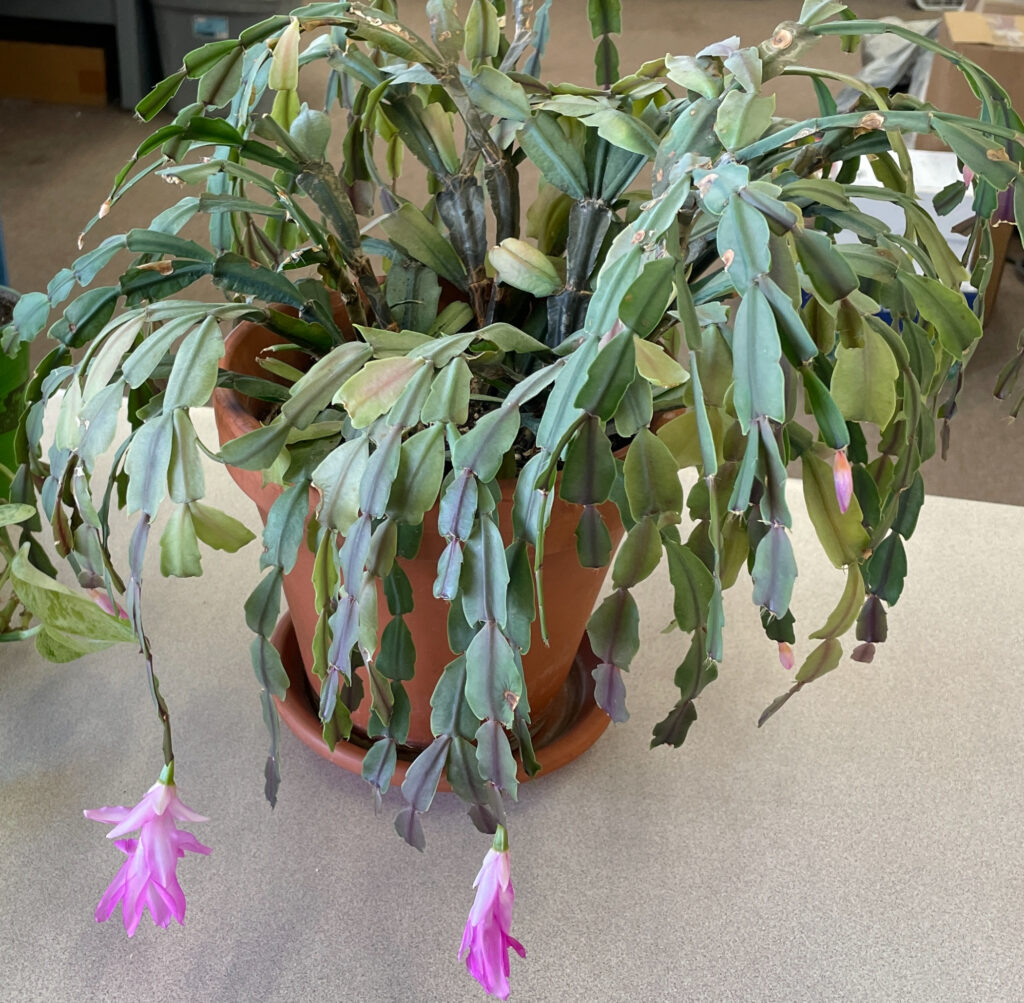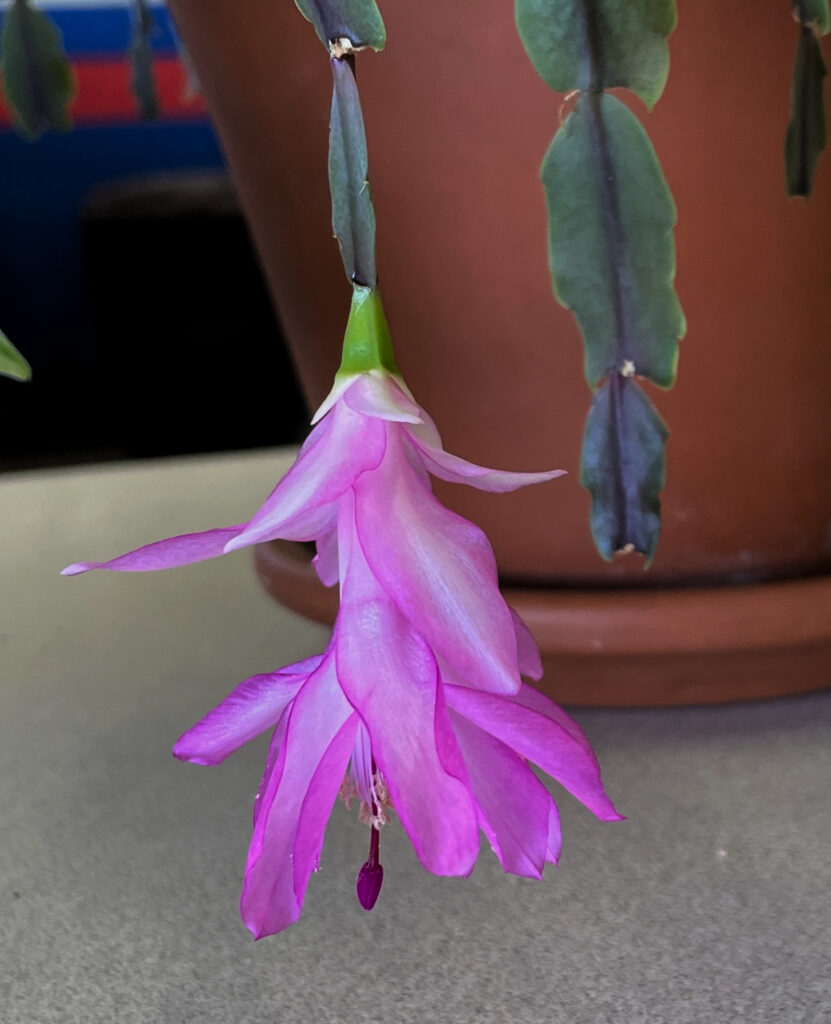Despite its name, the Christmas cactus (Schlumbergera buckleyi) is an epiphytic plant that grows on trees and rocks in habitats that are generally shady with high humidity. This tropical member of the Cactus family (Cactaceae) is not a true cactus. Tiny roots may cling to the plant or rock that it’s growing on. It is a succulent plant that stores moisture in its leaves. Chrstmas cactus is marginally drought tolerant, e.g. it needs to be watered more often and does not tolerate the sun’s heat and light intensity.

Christmas cactus is rarely sold at garden shops which prefer selling the more heavier flowering Thanksgiving cactus (S. truncata). Hybrid Thanksgiving cacti bloom earlier, hence the name, and produce showier blooms than Christmas cactus. Flowers are an elongated tube, reds, pink or orange hues, or white.
Christmas cactus initiates flowering from mid-December into February. Blooms droop down toward the ground and the stem segments (clados) are flattened with scalloped edges. “Leaves” are actually elongated segments with scalloped edges and not tipped (pointed).
Christmas cactus thrives in porous sandy potting media so that water drains off rapidly quickly. Don’t allow plant roots to sit in water. Plants prefer to be slightly root-bound. Repot holiday cacti once every 1-2 years. Repotting Christmas cacti too often can cause branch segments to snap off.
Add fresh growing media to the top of the pot to replace lost potting soil after many months. Fertilize plant every 2-3 weeks with a water-soluble fertilizer like 20-10-20 or 15-5-15 from March thru October and do not feed holiday cacti from November thru February.
Temps and photoperiod are key factors to successful Christmas (winter) blooming. Plants set flower buds when fall daylengths are shorter (12-14 uninterrupted dark interval), cool night temps around 50-55 °F, and daylight temps not exceeding 75 °F.
If your cactus isn’t exposed to cool 14-hour nights, it may never flower. This is the number one reason why Christmas cactus never blooms. The fix is an easy remedy.

Bring your plant indoor in the fall and reacclimate it to the indoor environment. By mid-October start to initiate flower buds for the holidays. Set your plant(s) in an east-facing sunny window, so the scalloped leaves don’t burn. Daytime hours should be around 65-70 °F and nighttime temperatures around 55-60°F fall and not drop below 40. Sudden fluctuations in temperatures, light and humidity may cause plants to drop floral buds.
Foliage may sunburn (redden) in direct sunlight. A stressed plant may not bloom during the winter holiday season. If the healthy scalloped green leaves develop a reddish tint, they are sunburned. Foliage should recover when moved away from direct sun.
Holiday cacti are non-poisonous and safe for pets and people alike. Over the years holiday cacti may become heirloom plants and bequeath in wills and estates. With good care, you can expect your plant to at least 30 years on average. Stem cuttings root easily in a 3:1 perlite: peat or a coarse sand: peat mix.
Spider mites, scale, mealybugs, and aphids are problem pests as well as root rots from overwatering.

 Posted in
Posted in 
